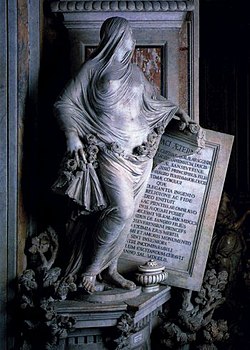A request that this article title be changed to Modesty (Corradini) is under discussion . Please do not move this article until the discussion is closed. |
| Modesty | |
|---|---|
 | |
| Artist | Antonio Corradini |
| Year | 1752 |
| Medium | Marble |
| Location | Cappella Sansevero, Naples |
Modesty or Chastity (Italian : La Pudicizia ) or Veiled Truth by Antonio Corradini is a sculpture completed in 1752 during the Rococo period. Corradini was commissioned by Raimondo di Sangro to sculpt a memorial for his mother in the Cappella Sansevero in Naples, where the marble sculpture still remains.

